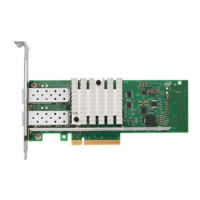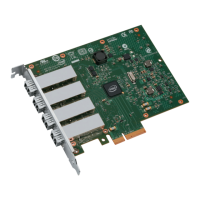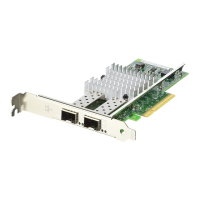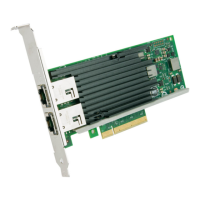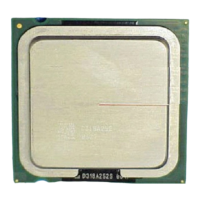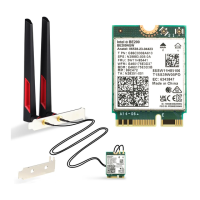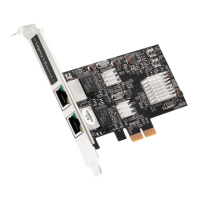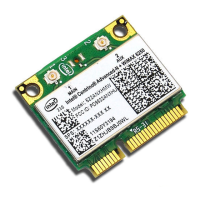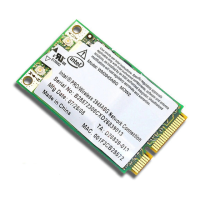646265-004 19
Intel
®
Ethernet Network Adapter E810-XXVDA4T
User Guide
4. SMA1 as 1PPS input and U.FL1 as 1PPS output:
# echo 1 1 > /sys/class/net/$ETH/device/ptp/ptp*/pins/SMA1
echo 2 1 > /sys/class/net/$ETH/device/ptp/ptp*/pins/U.FL1
# dmesg
[27158.812512] ice 0000:03:00.0: SMA1 RX + uFL1 TX
[27158.812519] ice 0000:03:00.0: SMA2 <current_state> U.FL2 <current_state>
5. Disable SMA1:
# echo 0 1 > /sys/class/net/$ETH/device/ptp/ptp*/pins/SMA1
# dmesg
[793017.697870] ice 0000:03:00.0: SMA1 + U.FL1 disabled
SMA2 <current_state> U.FL2 <current_state>
Note: Users must first disable U.FL1, as it shares the same channel number.
6. Disable U.FL1:
# echo 0 1 > /sys/class/net/$ETH/device/ptp/ptp*/pins/U.FL1
# dmesg
[793017.697870] ice 0000:03:00.0: SMA1 + U.FL1 disabled
[793017.812519] ice 0000:03:00.0: SMA2 <current_state> U.FL2 <current_state>
Note: Users must first disable SMA1, as it shares the same channel number.
4.5 Channel 2 Configurations
1. SMA2 as 1PPS input:
# echo 1 2 > /sys/class/net/$ETH/device/ptp/ptp*/pins/SMA2
# dmesg
[27158.812512] ice 0000:03:00.0: SMA1 <current_state> U.FL1 <current_state>
[27158.812519] ice 0000:03:00.0: SMA2 RX
2. SMA2 as 1PPS output:
# echo 2 2 > /sys/class/net/$ETH/device/ptp/ptp*/pins/SMA2
# dmesg
[27158.812512] ice 0000:03:00.0: SMA1 <current_state> U.FL1 <current_state>
[27158.812519] ice 0000:03:00.0: SMA2 TX
3. U.FL2 as 1PPS input:
# echo 1 2 > /sys/class/net/$ETH/device/ptp/ptp*/pins/U.FL2
# dmesg
[27158.812512] ice 0000:03:00.0: SMA1 <current_state> U.FL1 <current_state>
[27158.812519] ice 0000:03:00.0: SMA2 <current_state> U.FL2 RX
4. SMA2 as 1PPS out and U.FL2 as 1PPS in:
# echo 2 2 > /sys/class/net/$ETH/device/ptp/ptp*/pins/SMA2
# echo 1 2 > /sys/class/net/$ETH/device/ptp/ptp*/pins/U.FL2
# dmesg
[27158.812512] ice 0000:03:00.0: SMA1 <current_state> U.FL1 <current_state>
[27158.812519] ice 0000:03:00.0: SMA2 TX + U.FL2 RX
Did this document help answer your questions?
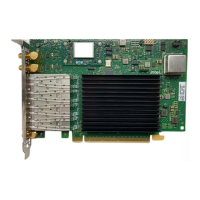
